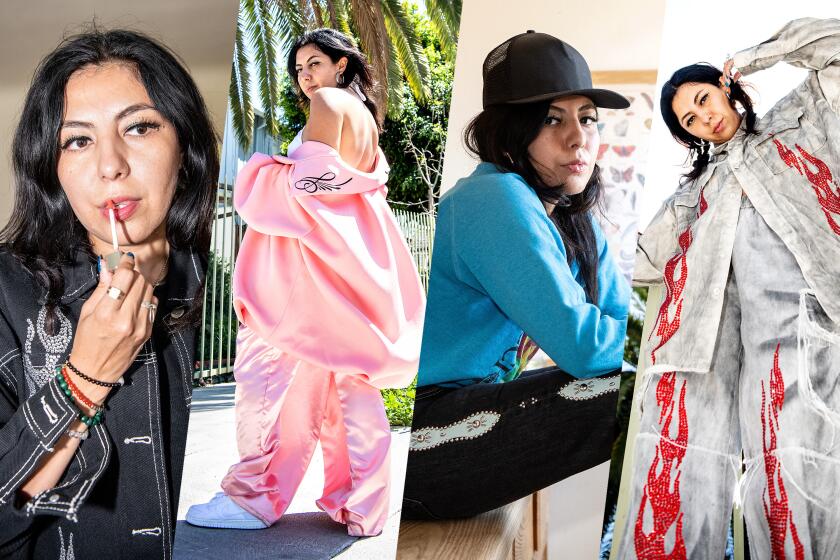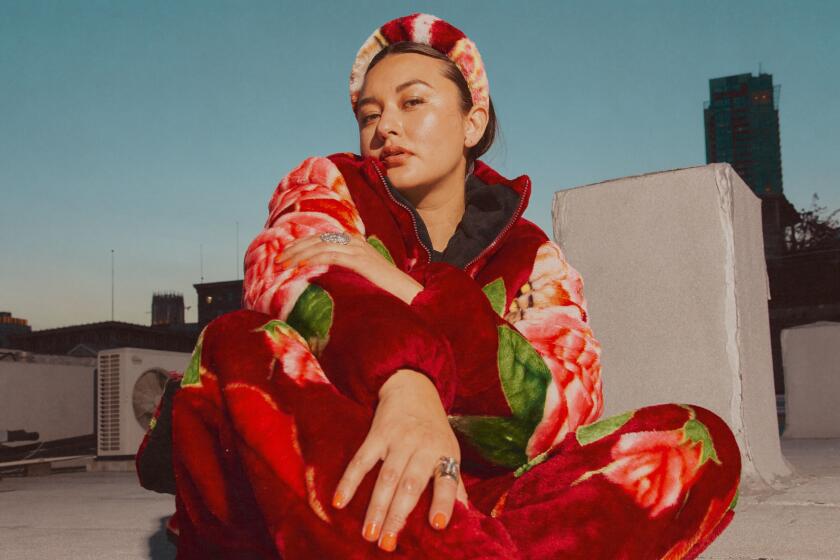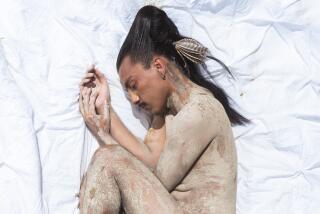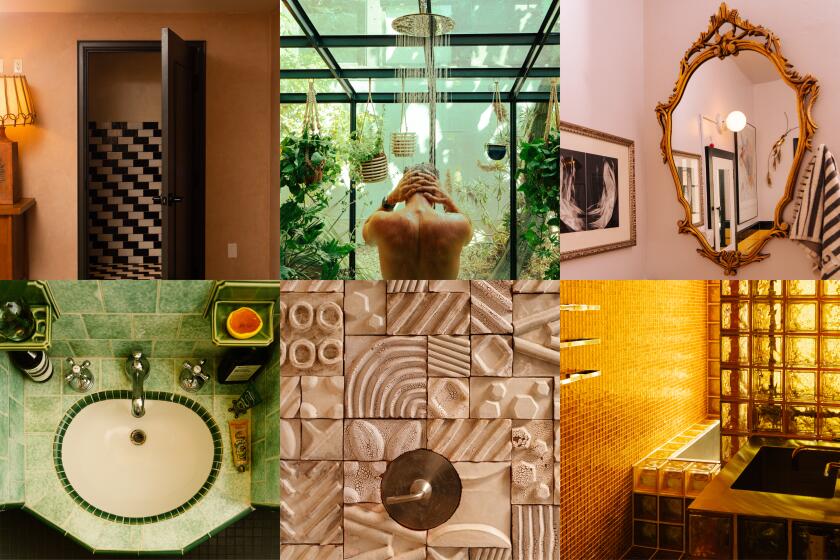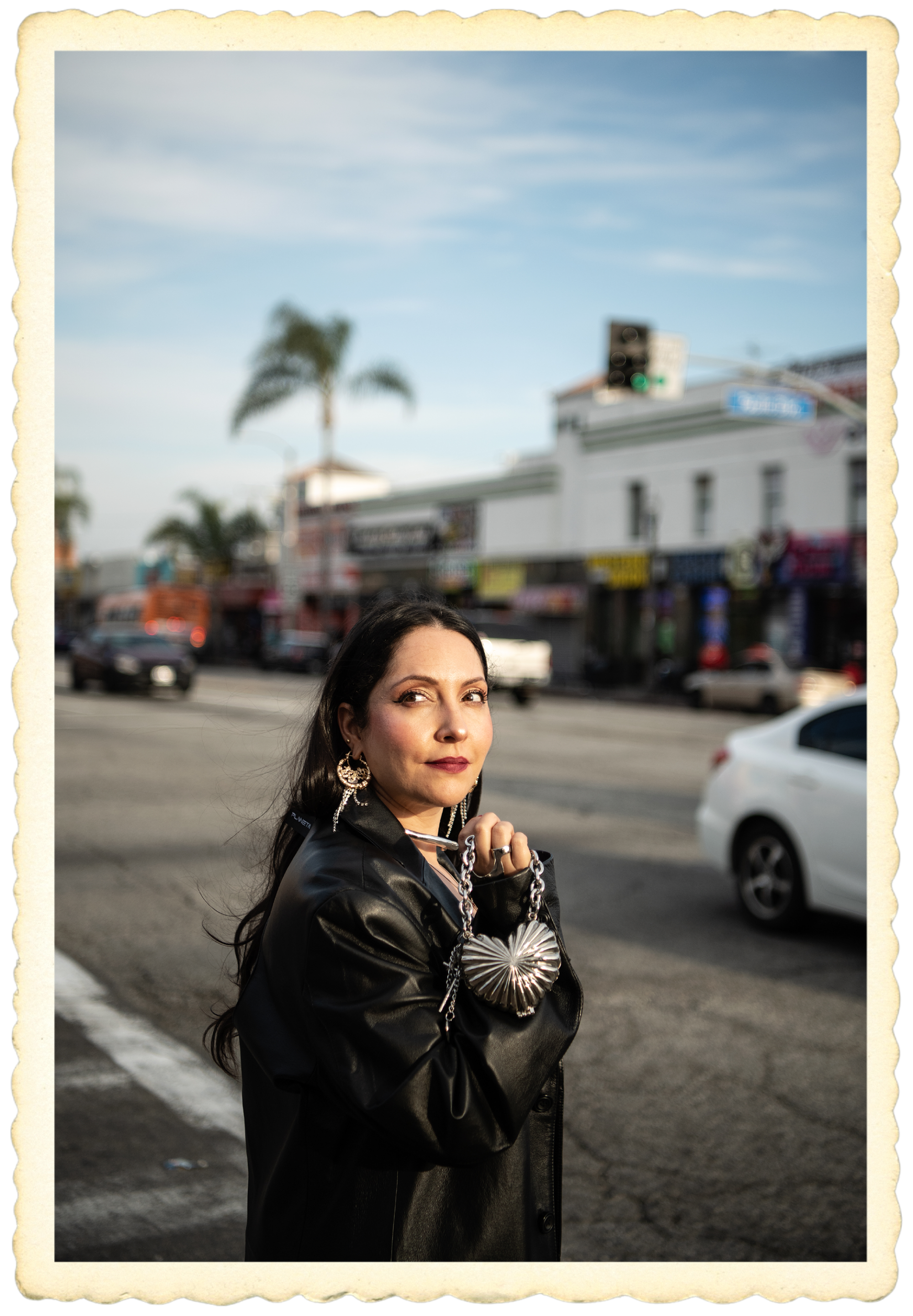
After running to every corner of the city — Koreatown, Silver Lake — to piece together the day’s outfit, Anita Herrera has returned to the place she learned style: Huntington Park.
In the tulle of the quinceañera dresses, sparkling sequins of going-out tops and contrast stitched low-rise jeans on Pacific Boulevard, or “La Pacific” as she knows it, Herrera found an early sartorial interest that would lead her to become not only one of the best dressed Angelenos but a visionary artist and curator.
“I think this is where it all started,” Herrera says. “I bought all my clothes on Pacific. If I wasn’t buying my clothes on Pacific, I was buying them in South Gate at Fashion Q or in Cudahy at Fashion 21. It wasn’t necessarily high fashion, but I think I got introduced to fashion on this street.”
As a teenager, she started working at a fashion store right off the avenue and made the unprecedented choice in her family to go to fashion school. Quickly, she went from selling clothes to managing “not knockoffs, but, like, inspired” merchandise at the store as a buyer.
“I think I saw something that was maybe bigger than me, and I think it started on this block,” she says.
After working in fashion, Herrera started producing events for Red Bull, Hennessy, Foot Locker, Opening Ceremony and many more as a cultural ambassador and consultant. In 2013, she founded her own production company so that she could stage exhibitions for artists from both L.A. and Mexico City — the two cities where she splits her time. For Herrera, who is mixed and Mexican American, being both aquí and allá is what drives much of her work.
For example, in one of her most recent art pieces, “Disco Piñata,” she merges the “two hallmarks of parties in the U.S. and in Mexico: the disco ball and the five-cone piñata.” She also hosts a regular series called Diaspora Dialogues, bringing experiences created by Mexican Americans to their homeland, including hosting an L.A. Backyard Party in Mexico City.
Beauty, for Herrera, lies at these intersections — how you got there, where it can take you next and where we can find understanding in between.
Astrid Kayembe: Why did you choose to have this conversation on Florence and Pacific?
Anita Herrera: It’s very nostalgic and important to me because, growing up, Huntington Park was a very overlooked part of Los Angeles. In my opinion, it’s a gem of Los Angeles, but it also has its own culture.
AK: How would you define that culture?
AH: Huntington Park culture was an intersectional culture. It was this mix of paisas, cholos, skaters, rockers, older people, younger people, people getting dropped off at the bus stop — everyone’s shopping.
It’s a hybrid, bicultural experience because so many things are in Spanish, but then you’re speaking in English, but then you end up speaking Spanglish. It’s part of the identity of growing up in Huntington Park but also in surrounding areas like South Gate, Bell, Cudahy. I think that’s beautiful.
If you move 30 minutes north or if you hit another city, that’s its own culture too. In a lot of the cultural projects that I’ve worked on as a consultant, a lot of the big brands want to loop in Huntington Park with East L.A. It’s completely different. We’re talking about regional differences. You move over one ZIP Code, and we’re talking about a whole nother culture. 90255 is its own little universe.
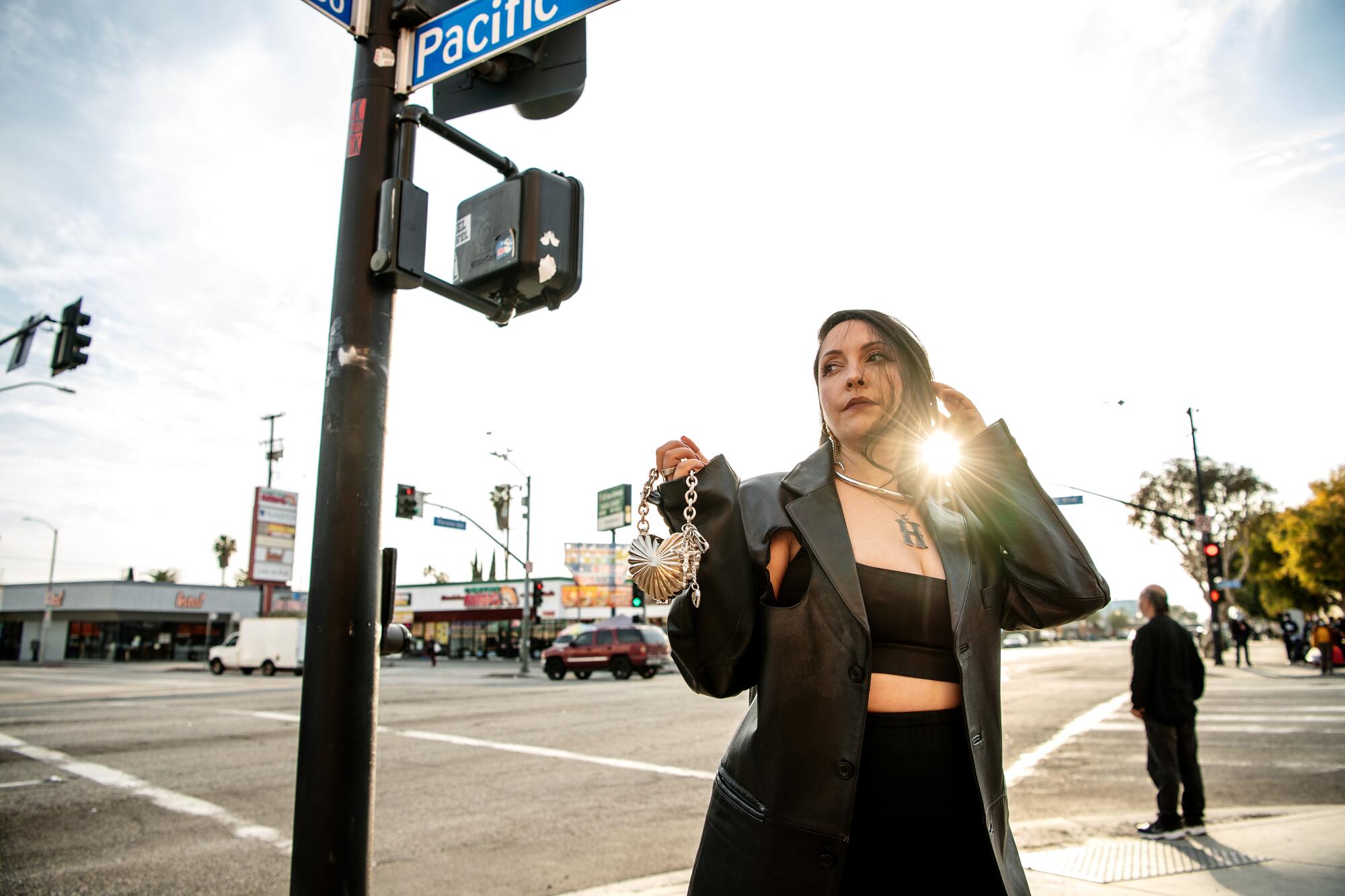
AK: What parts of Pacific Boulevard still influence your style?
AH: My style is very high-low in the sense that at the end of the day I dress the way that I dress. I got this shirt at this one store and it was on sale for $5.99. That’s how I dressed back in the day and this is how I pretty much still dress now. It was cool growing up around so many fashion stores because they were very eclectic, and they sold all kinds of clothes. You could just shop and shop and shop, and I think that created style.
I travel a lot, but people are always like, “Why do you rep L.A. so hard?” Because I come from a really specific part of L.A. and I also come from a part of L.A. that people don’t even think about. When outsiders think of L.A., they think of what they see on TV — and that’s another L.A. I’m not saying that that’s not L.A., because it is, 100%. But there’s also these other pockets and gems.
It’s the perfect time to renovate your style. Keyla Marquez can teach you how to flip it
AK: You do a lot of work in Mexico City. What inspired you to start working internationally?
AH: The bridge in my work has always been important. The bridge is always connecting L.A. and Mexico in some sort of way. I think that also comes from Huntington Park, but I started working with a music producer named Toy Selectah. He basically opened the door for me in Mexico City. Then I started working on my own, but really, he took me under his wing.
I’ve always been adamant about pushing for Latino artists, but also pushing that conversation and figuring out how to do that through fashion, which is what I did with the art show that I curated last year in Mexico City. I literally took clothes out of my closet and presented them as art. I did curatorial walk-throughs every day. At the art show, I talked heavily about growing up in Huntington Park in the hybrid, bicultural environment.
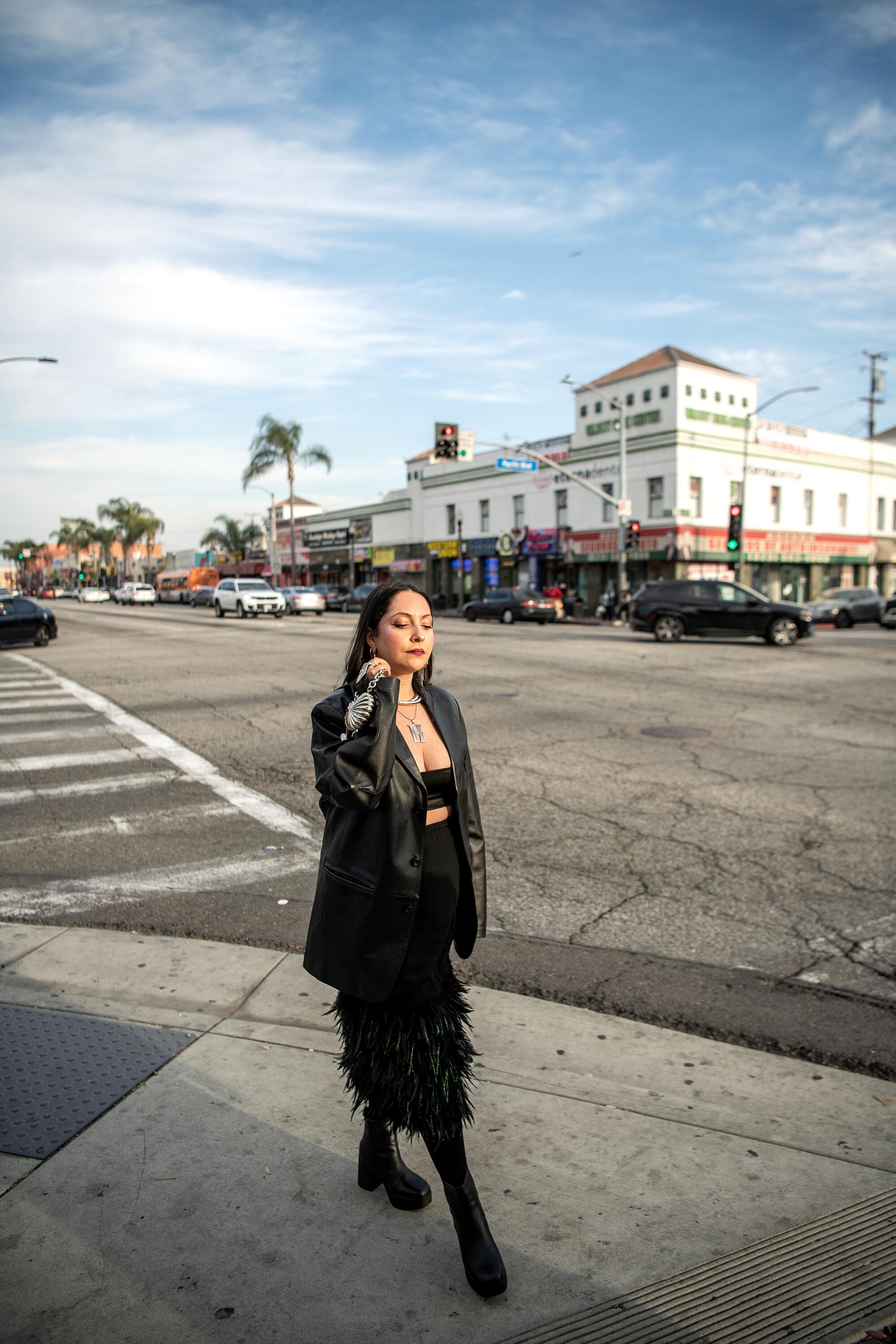
One of the shirts that I featured was the Paisaboys Chalino Sanchez shirt, and I was specific about why I chose that shirt to show as an art piece. When I was growing up, Chalino Sanchez represented the immigrant dream. He came from Sinaloa. I grew up with a lot of people from Sinaloa. He made it, but in L.A.; he made it where I grew up. He played the paisa clubs in Lynwood, in South Gate.
[Through that show], I was able to express, “Why do we in the United States in L.A., HP specifically, have such an affinity to La Virgen de Guadalupe?” Like on the Equihua cobija jacket. I made an art piece that was the Aztec calendar on one side and a manhole on the other side that said, “City of L.A.: Made in Mexico.” I picked specific iconography for that art show, but it all connected to Huntington Park.
How Equihua cobijas became jackets for Lil Nas X, Young Thug
AK: What’s your approach with an installation in L.A., like the “Nuestrxs Putas” show at Human Resources Gallery last year?
AH: [At Nuestrxs Putas] I wanted to create this place where borders didn’t exist. I wanted to create this place that I could find in both places, in L.A. and Mexico, because I am part of both places. I brought 16 brands from Mexico and 16 brands from L.A. — I mixed them together in the same conversation.
It was fashion. It was objects. It was healing products. That’s always been an important part of my work: finding these ways to create conversations through mediums that don’t require language. The curation doesn’t have to be traditionally a painting on the wall. It could be through these conversations among fashion objects. I’m actually really proud of that installation. At the walk-throughs, some people got introduced to brands in Mexico, some people made friends between countries.
AK: What would be your advice for anyone who’d like to achieve something similar to what you have?
AH: I think being an active part of whatever culture you’re in is really important. Really getting to know what things mean and what they are, not just on the surface level, is really important. When it comes to being a curator, it’s about telling a story. You’re creating this kind of world with whatever story you’re trying to tell. You have to be very in touch, very knowledgeable and very sensitive to the story that you’re wanting to tell. It will take the right people. Because you’re going to be placing the right, particular people to tell this story.
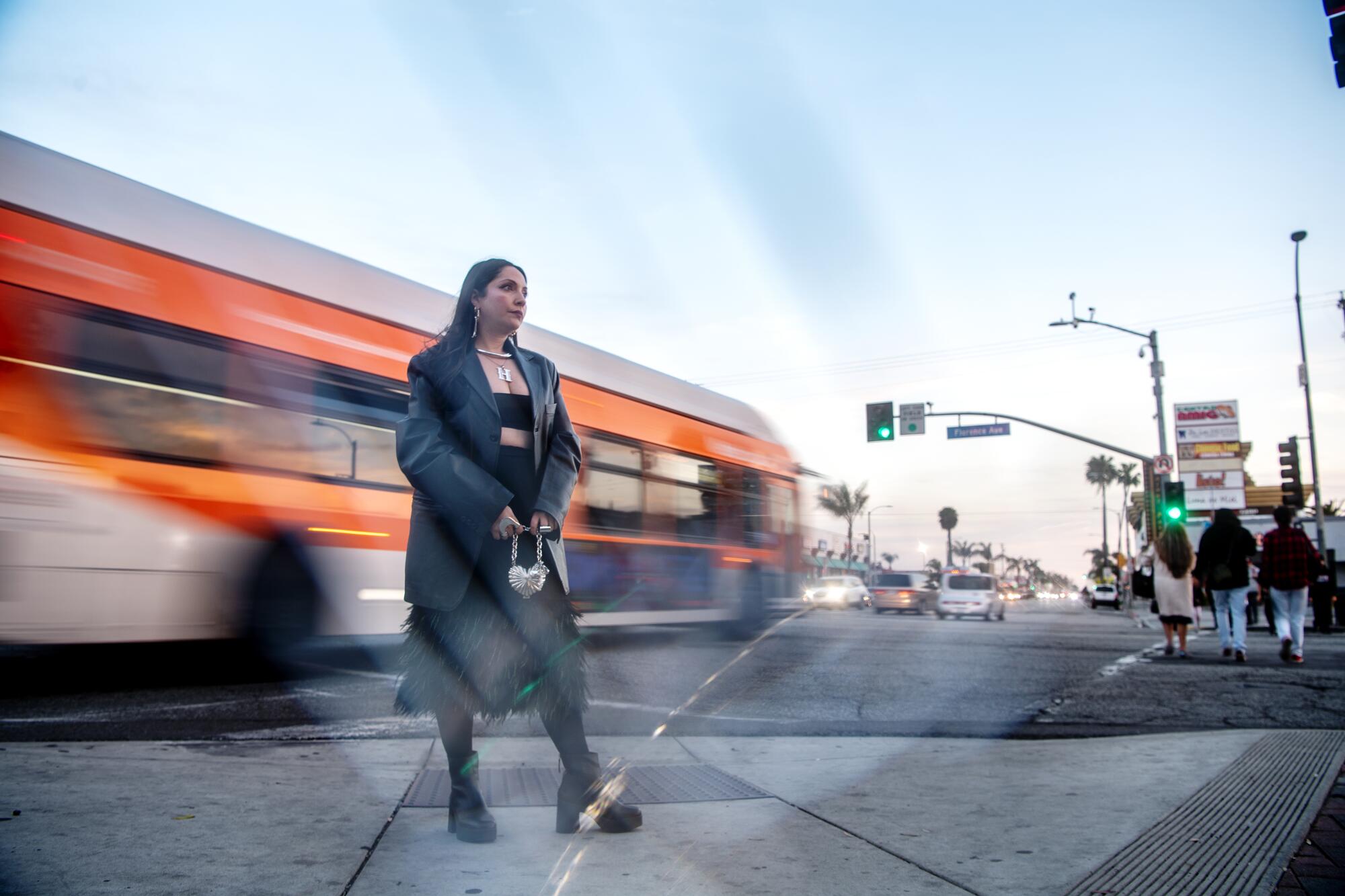
Producing an event, to me, is still one of the highest forms of contemporary art, because it is so specific. Every single detail is part of the story. To be honest, I think it takes a lot of time to make sure you’re doing it the right way. The art of curation is not an overnight thing — it’s an investigative process. I think it takes time to make sure that you’re doing it in the most culturally appropriate, sensitive way. Especially to tell the stories of our culture.
AK: Is there anything else I didn’t ask you that you think is important to share?
AH: There is only one HP, and that is Huntington Park.
Styling: Hoza Rodriguez
